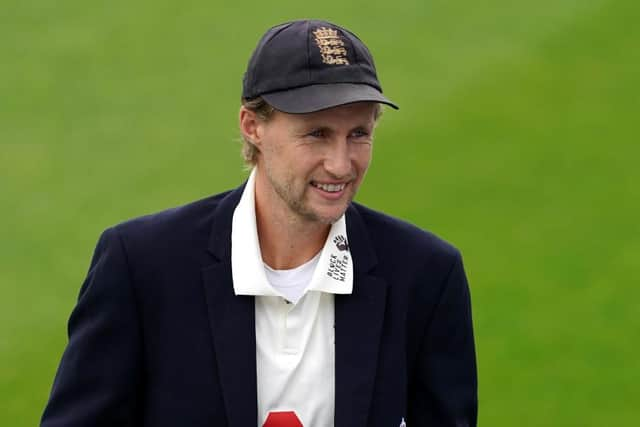What is the follow on in Test cricket? Rule explained - and why England didn’t enforce it in the match against India
England's winter tour of India has been propelled into the public spotlight after Channel 4 won the TV rights for the five match series.
It is the first time Test cricket has been shown on terrestrial television since the home 2005 Ashes series, meaning more people have the option of watching England's best.
Advertisement
Hide AdAdvertisement
Hide AdIt has led to many people searching the internet to learn more about cricket and its rules.


The laws of cricket can sometimes make following the action difficult to understand for many not familiar to the sport - yet the 'follow-on' rule is fairly straightforward once it has been explained.
What is the follow-on in cricket?
The follow-on in cricket is a rule that can be enforced in a situation when the team batting first has a substantial lead over the team batting second, following the conclusion of each side's first innings.
A traditional Test match sees two opposing teams take it in turn to bat and bowl over the course of five days, which typically allows for two batting attempts (known as innings) each.
Advertisement
Hide AdAdvertisement
Hide AdHowever, if the team batting first takes a lead of 200 runs or more after both sides have had their first innings then they can instruct the other side to 'follow-on', changing the order in which each team bats.
It means that the team batting second in the first innings will bat first in the second innings (ABBA), rather than a continuation of the structure at the start of the match (ABAB).
Though the same option applies to two innings matches of a shorter form, the number of runs required decreases.
This means for a three or four day match, a lead of 150 is required to enforce the follow-on; a two-day match requires a 100-run lead; and a one-day match requires a 75-run lead.
How do you enforce the follow-on?
The follow-on can be enforced by the team captain.
Advertisement
Hide AdAdvertisement
Hide AdThe captain notifies the opposing team's captain and the match umpires of their decision to take up the option to instruct the follow-on rule.
The decision, under section 14.2 of the game's rule book, cannot be reversed once the opposing captain and umpires have been notified.
Why do teams enforce the follow-on?
Teams typically enforce the follow-on to reduce the chances of a draw.
A chasing team batting last may opt to be extra cautious in their approach and swallow up time to draw the match rather than lose, if their innings is not concluded by the end of play on the final day.
Advertisement
Hide AdAdvertisement
Hide AdIf the chasing team, who have been set a big total, are asked to follow-on then it gives the opposing team more time to bowl them out, making the draw strategy more difficult to achieve.
The pitch, which typically deteriorates as the match progresses, is another factor in the decision-making process, while enforcing the follow-on can increase the pressure on a chasing team.
Why did England not enforce the follow-on in India?
A tremendous double century from skipper Joe Root helped England on their way to a first innings total of 578 all out in the first Test in India, with the hosts replying with a score of 337 all out.
It meant England, as the team who batted first with a lead of more than 200 (241 to be exact), could instruct their opponents to follow-on.
Advertisement
Hide AdAdvertisement
Hide AdReasons for not taking up the option to enforce the follow-on can include the physical strain it puts on the side's bowlers, reducing the chances of defeat and the condition of the pitch.
Asking the bowling unit to take another 10 wickets immediately after it has taken the first 10 wickets can be tiring, making it more difficult to dismiss the opposing team in their second innings.
Though the team batting first has a strong lead, they might decide to bat again to pile on even more runs and increase the pressure on the opposing team who know a win for them would be unlikely.
Finally, the team batting last is usually at a disadvantage on a deteriorated pitch which favours spin bowling. England spinners Dom Bess and Jack Leach took six wickets collectively in the first innings.
Whether Root's decision not to enforce the follow-on was the right one remains to be seen, with the result of the match usually swaying public and critic opinion.
